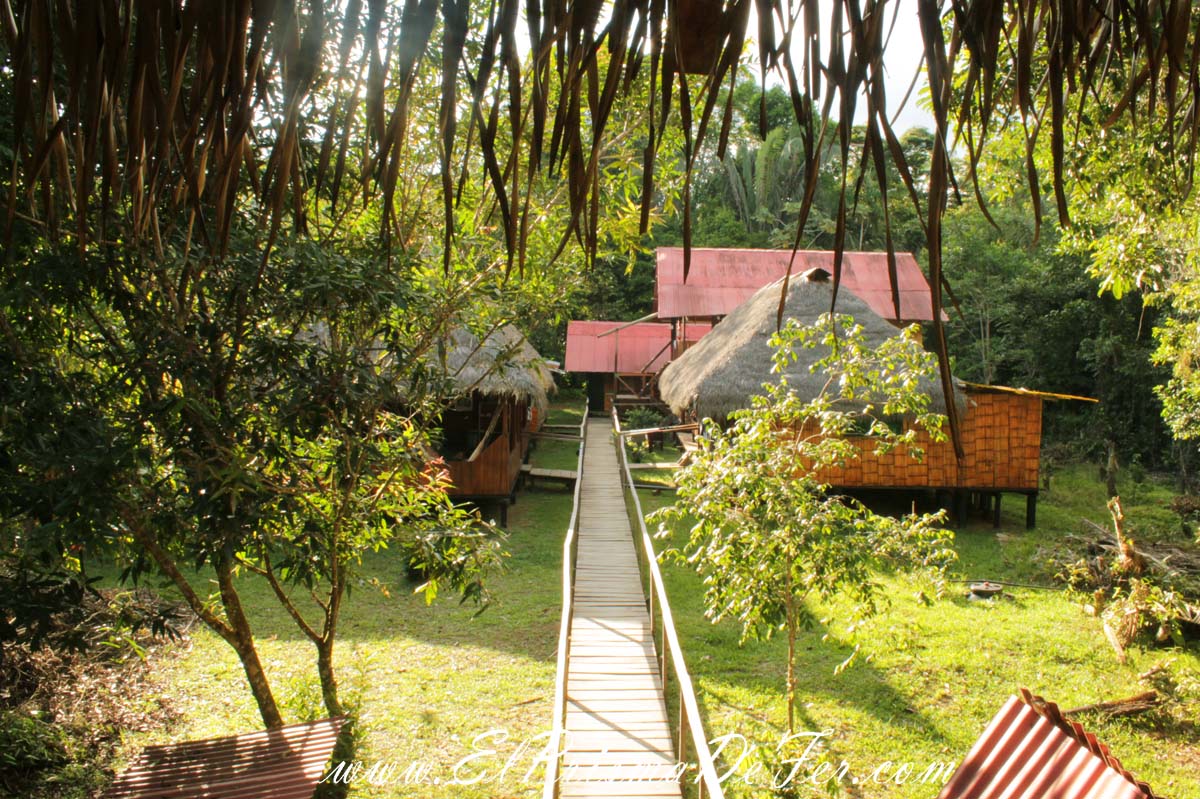The Cuyabeno Reserve, located in Ecuador's Amazon region, is one of the most beautiful destinations for those seeking to connect with nature in its purest state. Its meandering rivers, blackwater lagoons, and dense jungles are home to incredible biodiversity, from monkeys and exotic birds to caimans and river dolphins. Exploring this territory is like immersing yourself in a unique ecosystem, where every trail or river offers a surprise.
During my four-day tour, I had the opportunity to explore its canals by canoe, hike along trails surrounded by giant trees, and visit a local community that maintains ancestral traditions. The experience combines adventure, wildlife observation, and a close-up look at jungle life.
In this post, I'll share what it's like to explore Cuyabeno in Ecuador, what activities you can do, and practical tips for those who want to experience it firsthand.
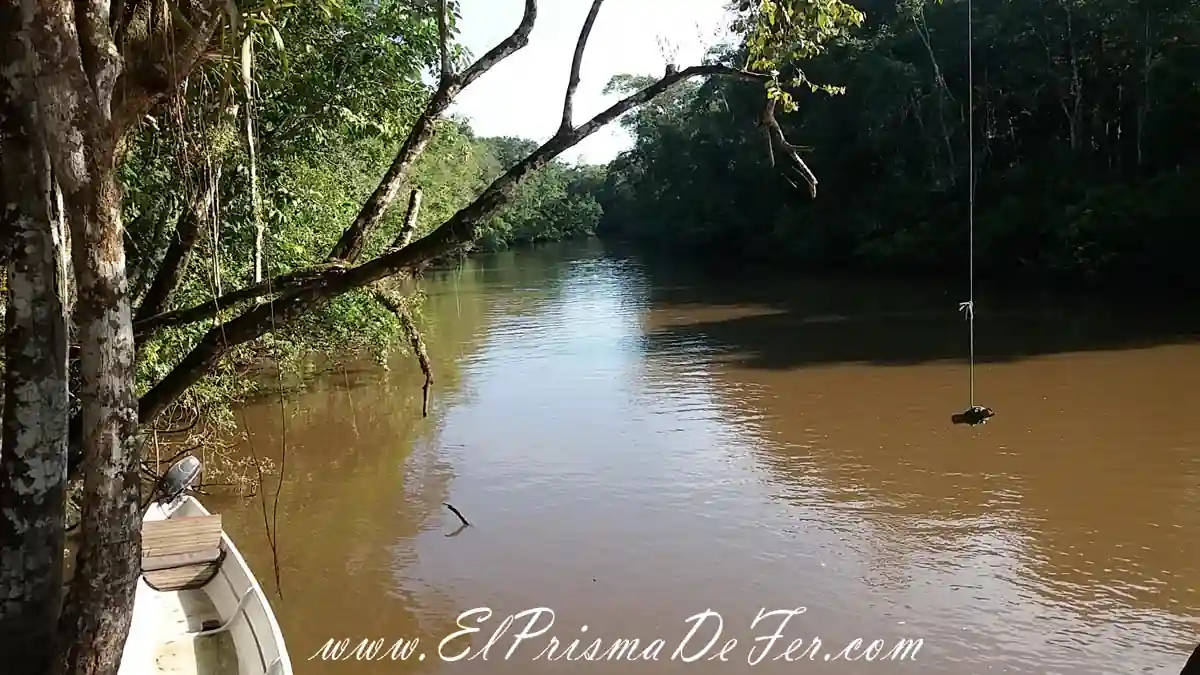
Table of Contents
The Amazon and the experience from Ecuador
The Amazon is the world's largest tropical rainforest, spanning several South American countries such as Brazil, Peru, Colombia, Bolivia, Venezuela, Ecuador, and Guyana. Each country offers unique experiences, from excursions along rivers and lagoons to immersion in indigenous communities that preserve ancestral traditions. The diversity of fauna and flora is astonishing: jaguars, monkeys, river dolphins, caimans, exotic birds, giant trees, and medicinal plants coexist in this incomparable ecosystem.
In my case, the visit was from the Ecuadorian side, specifically to the Cuyabeno Reserve. This area allows you to explore rivers and canals by canoe, hike jungle trails, and visit local communities that offer a glimpse into their way of life. It's an ideal tour for those who want to experience the magic of the Amazon in a protected and relatively accessible environment, with the opportunity to combine adventure, nature, and culture in a single trip.
How to get to Cuyabeno and available tours
The Cuyabeno Reserve is located in the Amazon region of Ecuador, in the province of Sucumbíos, near the border with Colombia. The main access is from the town of Lago Agrio, where most visitors stay one night before starting their tour.
From there, you travel by vehicle to a bridge past the village of Tarapoa, where you then take a boat that travels along the rivers and canals to the lodges within the reserve. The river trip allows you to slowly enter the jungle, with many opportunities to observe birds, monkeys, and other animals.
Cuyabeno tours typically last between 2 and 4 days, depending on the operator and the type of experience you're looking for. They include guided jungle hikes, canal navigation, lagoon visits, interaction with local communities, and wildlife viewing.
Many lodges offer accommodation in cabins on stilts with basic amenities, and meals prepared with fresh local produce are usually included. Most tours combine adventure, environmental education, and cultural exposure, offering a complete experience of the Ecuadorian Amazon.
What to know if you leave from Quito to reach the Cuyabeno Reserve
In Quito, there are many travel agencies offering tours to Cuyabeno with different options. They all tend to offer similar itineraries for each day in the jungle, with approximate prices between US$260 and US$320 per person, depending on the number of days chosen, although it is sometimes possible to negotiate a bit. The main difference between agencies is usually the lodge where you stay: each agency has agreements with certain lodges, but if one is full, they usually offer similar options.
The only option you can take on your own is transportation from Quito to Lago Agrio, which costs approximately US$12 and takes about 6 to 7 hours. The most common option is to travel on a long-distance bus at night, which leaves from Terminal Carcelén (north of Quito) around 11:00 PM.
Please note that after 9:30 p.m., the metropolitan buses to the terminal stop running, so in this case you may need to take a taxi.
It's worth noting that these excursions can also be booked from other parts of the country, such as Baños, but this guide focuses on departures from Quito.
Map with main references of the Cuyabeno tour
What does the tour to the Cuyabeno Reserve consist of?
The itinerary that I booked and that I will detail below is 4 days and 3 nights, staying at the Cuyabeno Dolphin Lodge.
Day 1: On the way to the Cuyabeno Reserve – Laguna Grande
I arrived from Quito to Lago Agrio in the early morning and waited until the van picked us up at 9:30, the departure point for the Reserve. There, we met the guide who would accompany us for the next four days.
The journey to the Cuyabeno River Bridge takes about two hours. From there, all groups board boats that take us deeper into the reserve, enjoying the jungle scenery as we move away from the city.
During the tour, which lasts approximately two more hours depending on the lodge, it is common to see monkeys, birds, and abundant vegetation, gradually delving into the purest nature of the Cuyabeno.
Laguna Grande in the Cuyabeno Reserve
Upon arriving at the Lodge, we are assigned our rooms, we rest for a while and in the afternoon we begin our first excursion, going to the Laguna Grande to swim and watch the sunset.
From the lodge, the boat takes us to Laguna Grande in about 20 minutes, where we can enjoy the scenery and look for animals such as alligators, monkeys, birds, and even small anacondas. During the tour, the guide takes the opportunity to explain details about the reserve's flora and fauna and is always willing to answer questions.
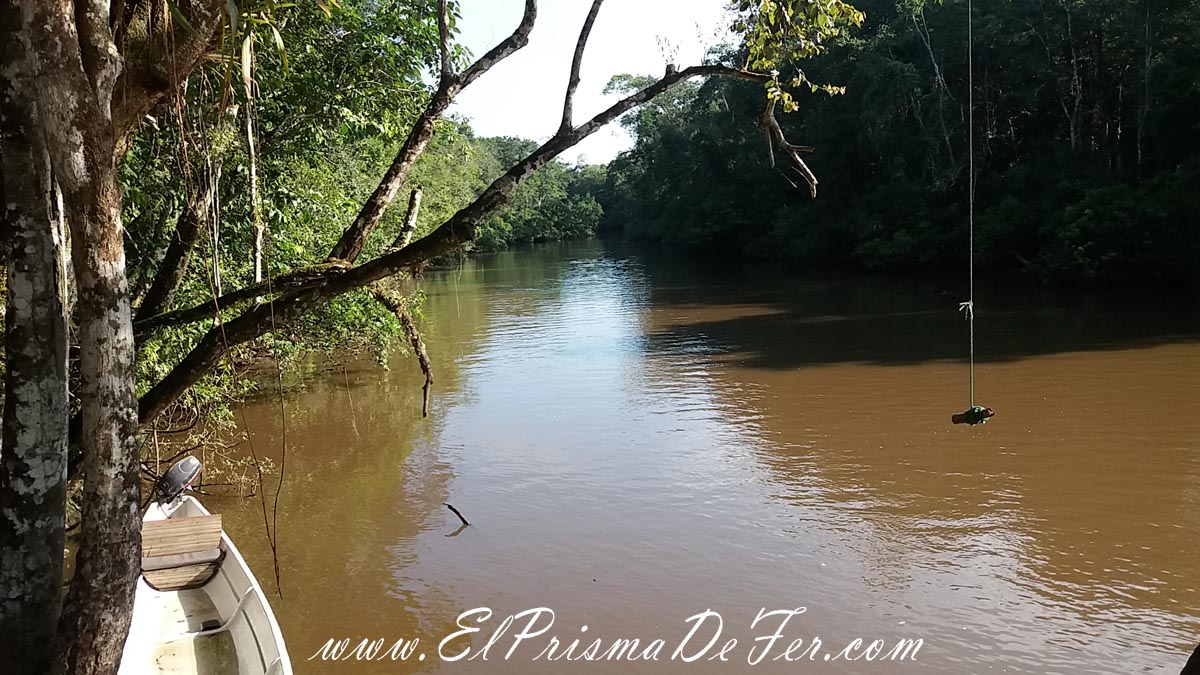
Laguna Grande is a vast expanse of water surrounded by jungle, ideal for watching sunsets and, if you're lucky, pink dolphins. As night falls, the jungle comes alive: the sounds change, and you can spot small alligators and snakes near the boat.
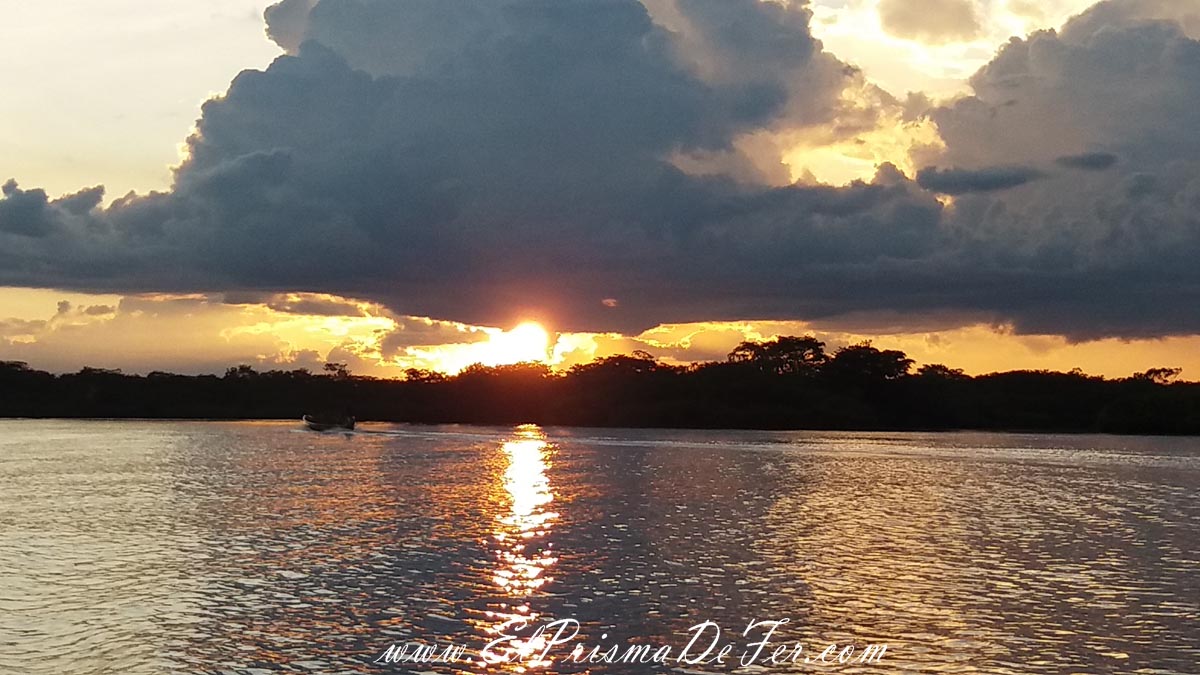
After returning to the lodge, dinner and rest arrive after a full day in the jungle.
Day 2: Hiking through the Cuyabeno Reserve – Flooded Forest
The second day starts early, we have breakfast (which is included in the tour) and we go out for a 3-hour trek in the jungle.
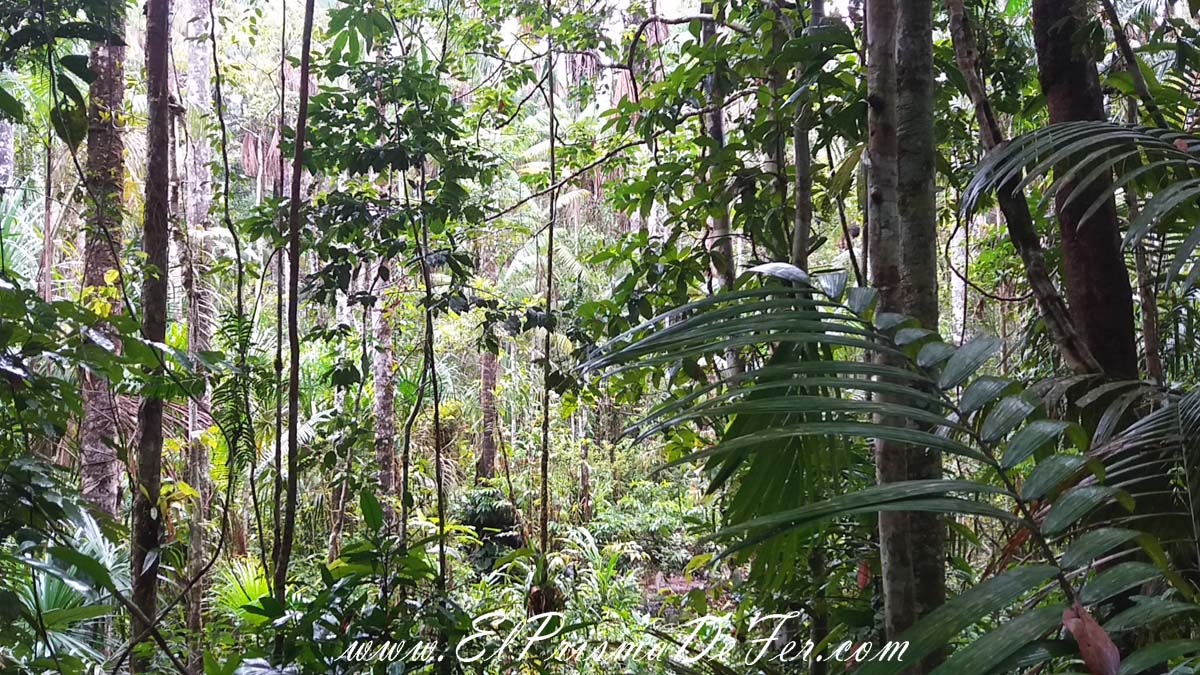
The hike is easy and mostly flat, although it can be a bit swampy in some sections. Throughout the walk, the guide tells us about the local animals: their habits, eating habits, and characteristics, like a live biology lesson.
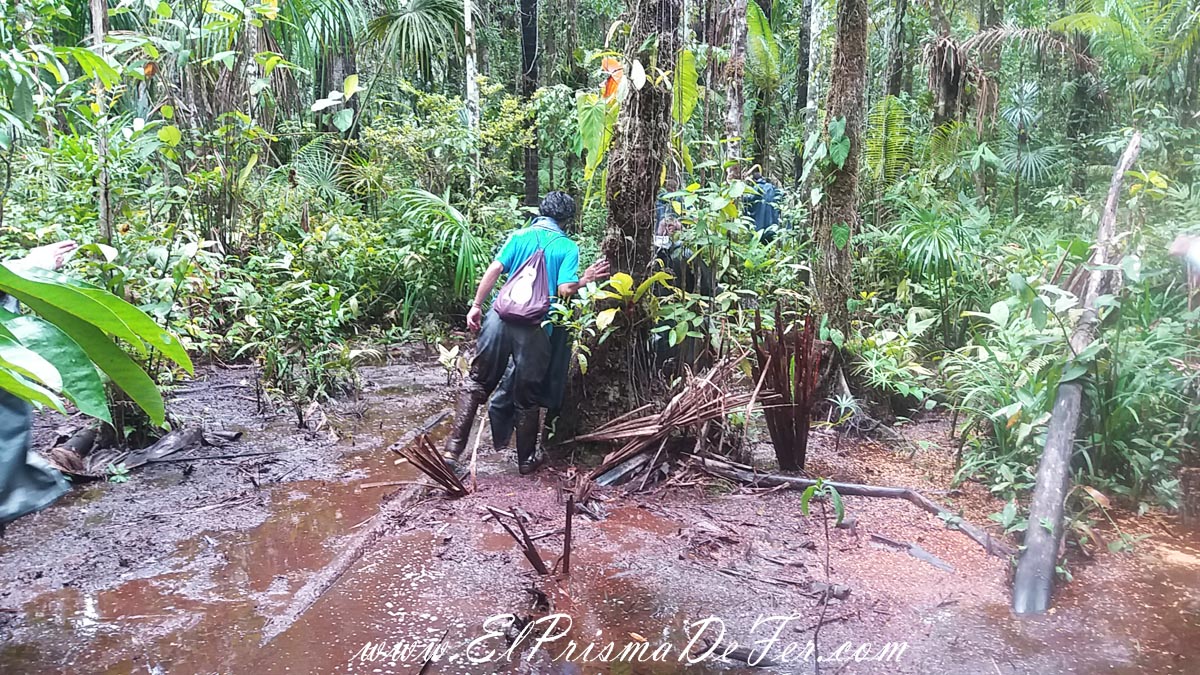
During the walk you can see spiders, different types of monkeys, birds, giant ants and a wide variety of insects that we will probably never see at home (luckily! :O).
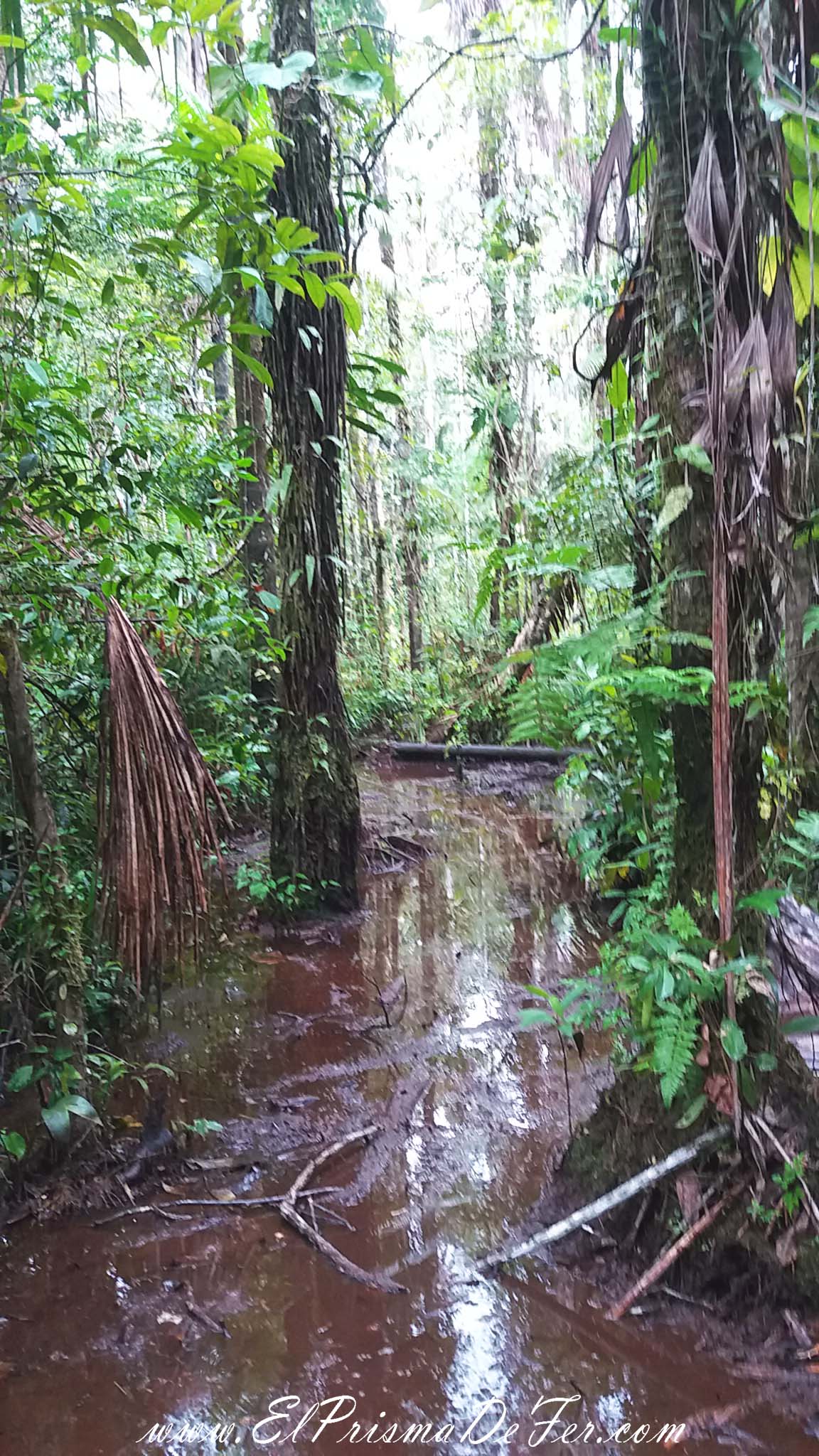
Cuyabeno Flooded Forest
In the afternoon, we headed to the Cuyabeno Flooded Forest, so named because many of the trees and plants emerge directly from the water. It's close to Laguna Grande, and it's a lovely boat ride through its canals.

It's also a good place to spot wildlife, such as boas or caimans, if you're lucky. In our case, we found a baby anaconda, but little else.
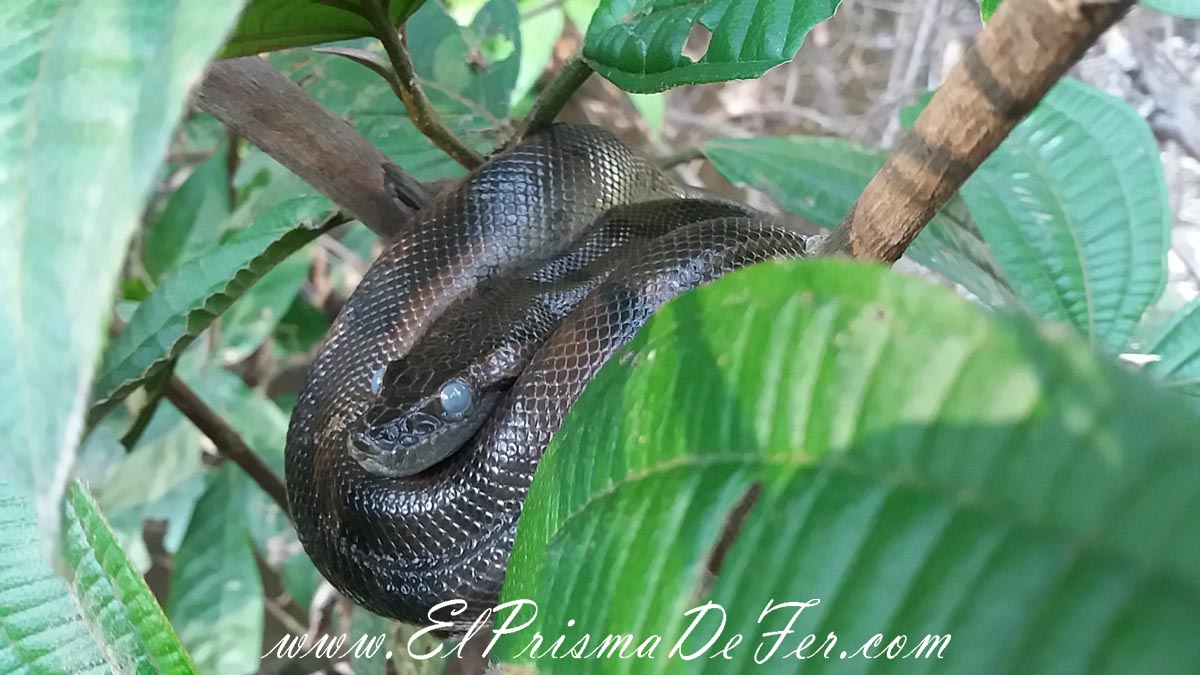
Suddenly, a torrential downpour broke out, forcing us to turn back; visibility was zero, making it impossible to continue.
These kinds of abrupt changes in the weather are common: a sunny moment can turn into a storm in a matter of minutes, so we had to return to the Lodge and not go out for the rest of the day.
Day 3: Visit to communities and trekking
In the morning of the third day, it is time to visit one of the indigenous communities that live within the Cuyabeno Reserve. We visited the Siona community, although we may have to visit another one, as the tour groups rotate to avoid overcrowding the communities.
They showed us how they make cassava bread and explained a little about their daily lives, although honestly, I found it all rather tourist-oriented and inauthentic. Sometimes the village shaman gives a talk for a US$5 contribution.
The most authentic experience I experienced during this visit was an impromptu soccer game between the village boys and our group, which ended with a refreshing swim in the river.
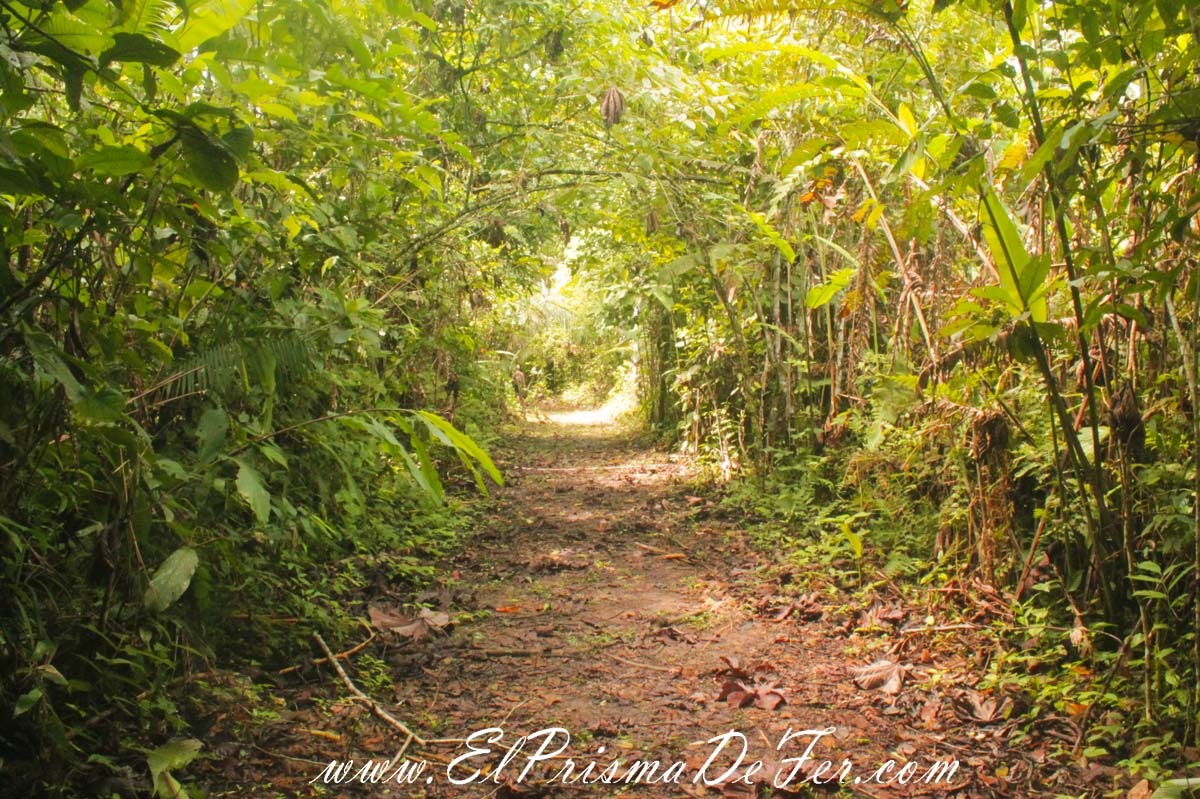
In the afternoon, we returned to Laguna Grande to enjoy the sunset, spend some time in the water, and continue observing the local wildlife.
You never know what you'll find on each outing. Sometimes animals appear that you haven't seen before, and the guide is always attentive to show us the most interesting things during each outing.
Hike on the Saladero Trail
At night, we took a one-hour hike along the "Saladero" trail. It was a unique experience: the sounds of the jungle and the activity of insects become even more intense in the dark.
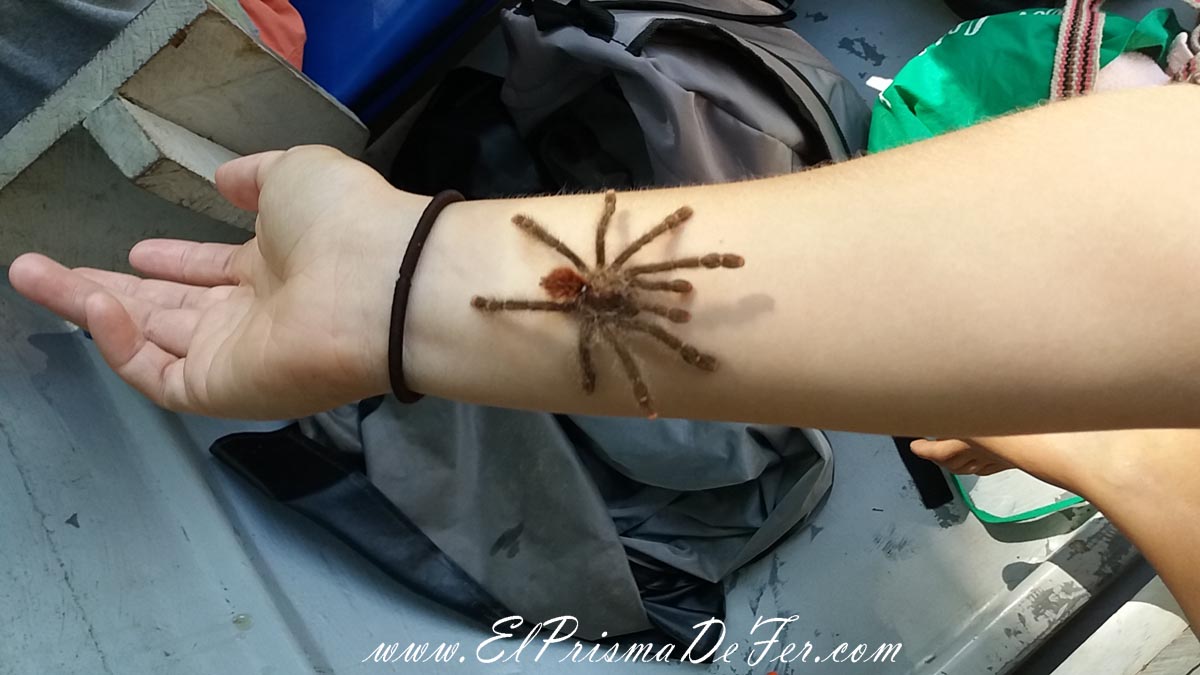
There are spiders, giant ants, and bugs everywhere, but nothing too exaggerated either; we're not going to be eaten by large mammals or poisoned by poisonous insects 😄.
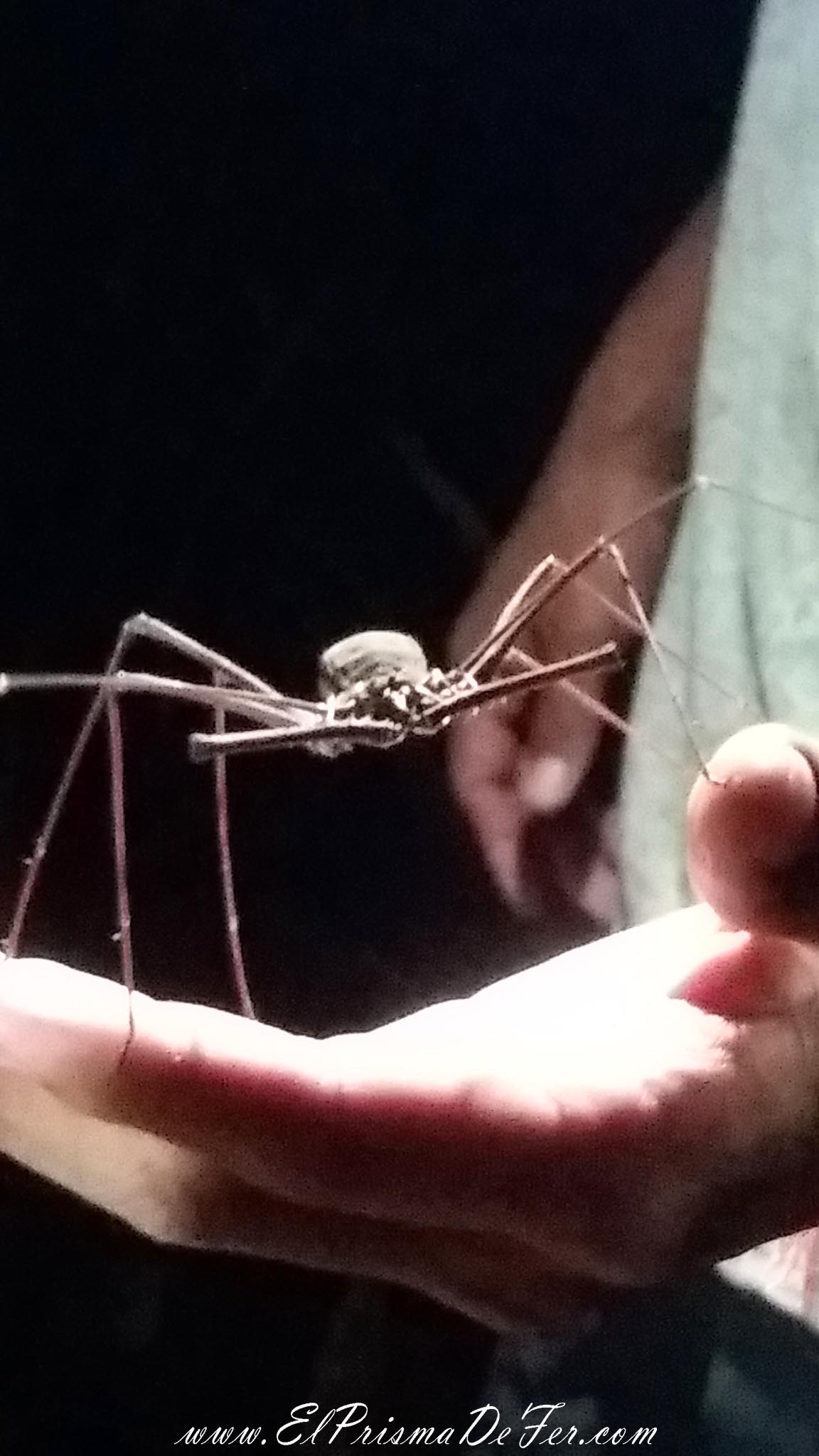
Day 4: Birdwatching and Return to Quito
On the morning of the last day we started with bird watching. It's basically a boat trip along the same rivers as always, but by leaving so early, between 7 and 8 a.m., you can see many more birds. The guide will help us locate them with binoculars and explain the variety of species we encounter.

Return to Quito
After midday, the experience at the Cuyabeno Reserve concludes. We return by boat to the Cuyabeno River Bridge, slowly saying goodbye to the jungle and its sounds.
The tour ends at Lago Agrio, where you are once again on your own. To return to Quito, you can take a tourist bus that will drop you off directly at your hostel (although it's usually more expensive), or take long-distance buses like the one we took to get there.
The disadvantage of the latter is that they arrive at the Quito terminals (north or south) quite late, around 11 p.m., so you will generally need to take a taxi to complete the transfer to your accommodation.
Personal thougths on the tour to the Cuyabeno Reserve

My experience at the Cuyabeno Reserve left me with a very positive feeling. Despite the long journey from Quito, the tour is absolutely worth it. It's a unique opportunity to completely disconnect from civilization and immerse yourself in a completely different environment.
Spending several days in the jungle, surrounded by the constant noise of animals and insects, navigating the river channels and observing wildlife in its natural habitat, generates a sense of peace difficult to find elsewhere. It's a direct contact with nature that, although demanding effort and patience, rewards with unforgettable memories and a true connection with the Amazon.

